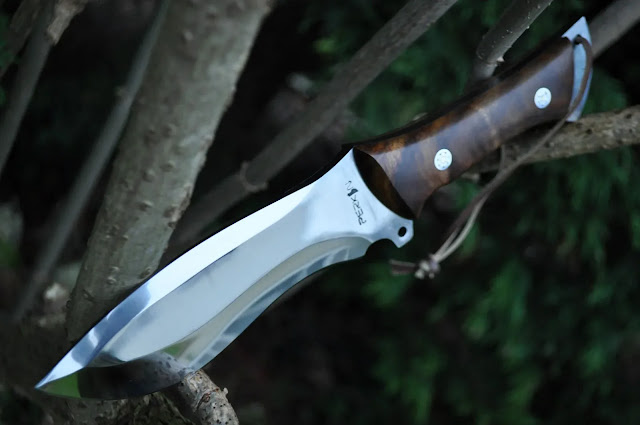The Difference Between Real and Fake Damascus Knives
Handmade Damascus Bowie knives have traditionally been regarded as the best knives for hunting. These knives have their roots in near-eastern civilizations and were made to be durable and resilient. However, these knives' blades stand out the most since they are extremely sharp and exhibit elaborate patterns.
Damascus steel knives are highly sought after for usability, adaptability, quality, and elaborate designs. However, you'll discover that Damascus steel knives come in a wide variety of prices, from quite affordable to extravagant. So when someone gets their hands on a Damascus blade, they ask a common question: "Is my Damascus steel knife authentic or fake?"
Given the abundance of imitation Damascus knives, this is a crucial topic. Numerous telltale indicators can let the user determine whether their Damascus blade is authentic or fake, even though it is not the question that is easiest to answer. It is crucial to distinguish between the many techniques used to create Damascus steel knives before describing some of these indicators.
A REAL OR FAKE DAMASCUS STEEL KNIFE?
A handmade Damascus Bowie Knife might be challenging to tell if it is made of original Damascus steel or a fake. You must polish a piece of a blade until the pattern is completely gone to verify the legitimacy of a Damascus steel blade. After that, you submerge the blade in an acidic liquid. When the blade is immersed in the acid solution, the original pattern will reappear in wootz Damascus steel or pattern-welded steel. The edge of a faux Damascus knife will be consistent, leaving a surface with various markings.
It's a lost art to create Damascus steel knives using actual historical techniques. Pattern welding is the most popular technique used nowadays to make Damascus steel knives. As a result, if your knife is pattern welded from Damascus steel and has acid etching, it is an authentic Damascus steel knife.
As was already mentioned, pattern-fastened Damascus steel knives are greater than their historical equivalent because they have fewer impurities and are constructed from homogenous layers.
Damascus steel fixed blade hunting knives are also incredibly broad and adaptable. The finest materials used in Damascus knives include stag, appropriate equipment wood, ivory, ram horn, chestnut, tiger leather, etc.
CONCLUSION
Knives made of Damascus steel are available in various sizes, forms, and costs. Due to their use of high-quality materials, extensive forge welding, and versatility, they are simple to imitate, utilizing fake techniques because of their improved usefulness, adaptability, and great demand. So, the question, "Is my Damascus weapon a real or fake Damascus steel knife?" naturally emerges.
The truth is that authentic Damascus steel is used in both wootz steel and form welded Damascus knives. Wootz steel was once used to make Damascus knives, but this technique is now extinct. The main method utilized to create Damascus steel knives today is pattern welding. The pattern-soldered blades rival, if not outperform, their vintage wootz steel counterparts in terms of strength. False Damascus knives, on the other hand, are made from carbon steel or stainless blades that have undergone acid washing or laser etching processing to create the renowned Damascus steel patterns.


.png)

Comments
Post a Comment